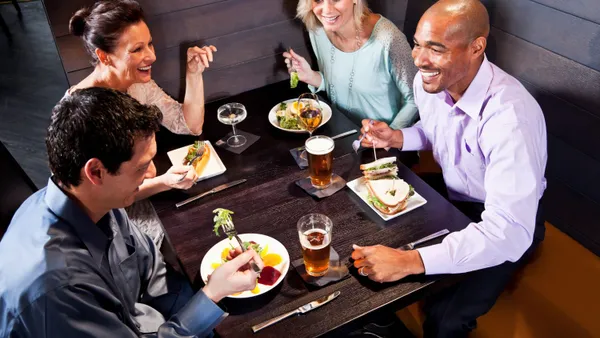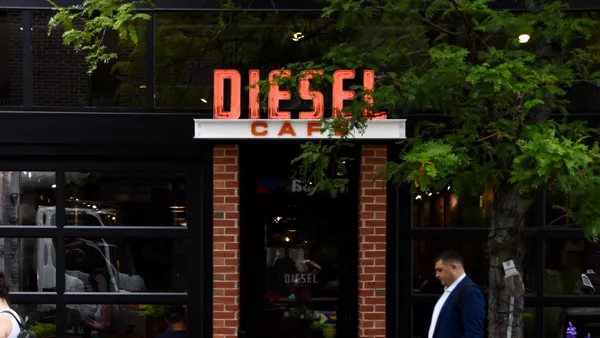Dive Brief:
- Fifty-eight percent of diners are eating restaurant food more this year than in 2021, a Popmenu survey of 1,000 customers conducted in September found.
- Most customers are willing to pay higher prices to keep restaurants open, at least in the short term, with 68% of diners reporting they would accept menu prices, per the survey.
- While this study indicates strong demand for restaurants, YipitData research provided to Restaurant Dive shows lower-income diners are trading down or reducing spending, with sales falling among diners making less than $45,000 annually.
Dive Insight:
A drop in traffic among lower-income consumers has been evident for some time, with a study from The NPD Group finding that a quarter of lower-income households didn’t eat out at all during Q2 2022. But Popmenu’s data includes some information about what factors are drawing customers to restaurants despite pricing pressure.
“While mindful of their own household economics, 61 percent of consumers said they would pay more to keep restaurants open if a recession hits in 2022 or next year,” Brendan Sweeney, CEO and co-founder of Popmenu, said in the statement. “That says a lot about how important restaurants are to their local communities and how much people rely on and empathize with them.”
Popmenu asked customers who have increased their restaurant spending which factors motivated them to eat out more. Sixty-one percent cited convenience, while 43% said they wanted to support local restaurants and 36% cited the high cost of groceries. Data released by the U.S. Bureau of Labor Statistics in September showed food-at-home costs have grown much faster than food-away-from home costs in the last year, with prices for meals made at home rising 13.5% year-over-year, compared to an 8% increase for food away from home.
Still, inflation has impacted restaurant menu prices, with 93% of 415 restaurant owners surveyed by Popmenu increasing or planning to increase prices. According to YipitData, price increases have been sharpest in coffee, where prices jumped 12% year-over-year; pizza, where prices rose 11%; and fast casual, which has seen price increases of about 9% since summer 2021.
Rising prices increases may be driving consumers to choose QSR meals over full-service food, according to data collected by Placer.ai. In the last full week of September, full-service restaurant visits were down over 18% versus 2019 and 6% versus 2021, according to Placer.ai’s quarterly index. QSR traffic was down 7% against 2019, and up 0.7% compared to 2021. Similar data collected by Placer.ai in June indicated QSR traffic has been stronger than full-service traffic for most of the year. Popmenu’s survey found more than a quarter of consumers have increased their fast food consumption in response to rising food costs.
Pricing pressure on consumers is evident in changing order compositions at QSR restaurants, with chains like McDonald’s seeing customer demand for value offerings rise. Domino’s, which has also seen customers turn toward cheaper offerings, recently raised the price on its carryout Mix & Match deal. The pizza giant has seen carryout increase as a proportion of sales relative to delivery. However, Popmenu found that delivery has proven relatively sticky, with 69% of surveyed consumers maintaining or increasing their delivery frequency, despite the fees usually associate with the channel.














